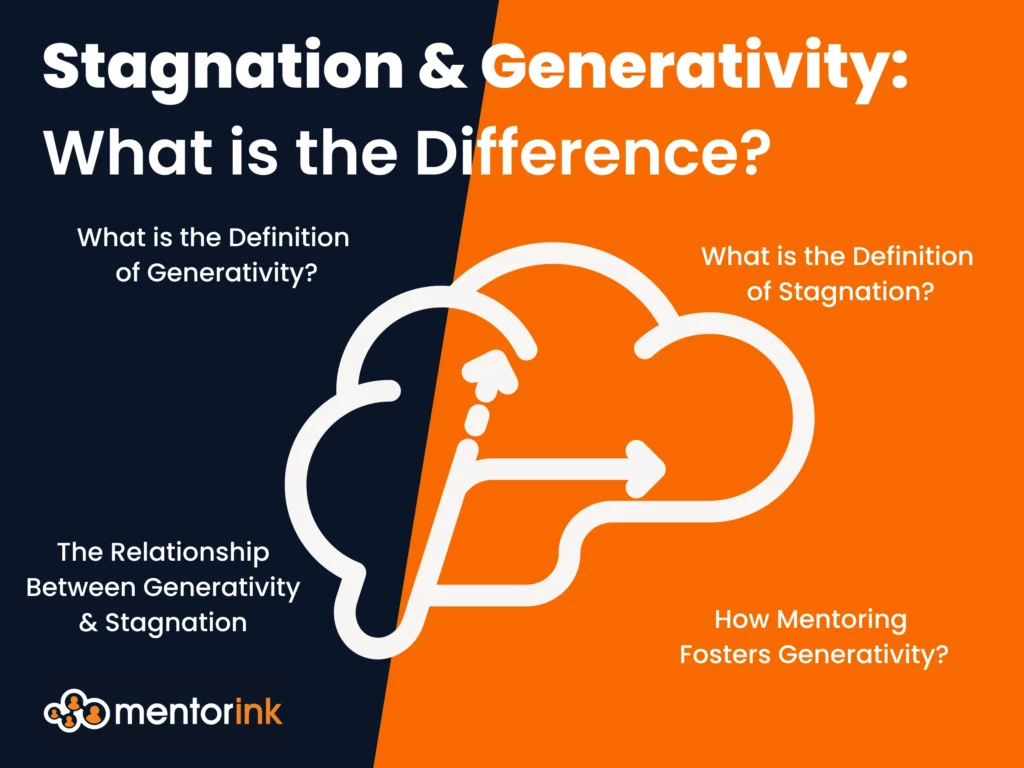
The concepts of stagnation and generativity will cross one another as we go through life, particularly in our middle and later years. Derived from Erik Erikson’s stages of psychosocial development, these phrases indicate two distinct ways in which people can go through life. Recognizing the difference between stagnation and generativity is critical to personal growth and achievement.
What is the Definition of Generativity?
Generativity is a psychological concept that encompasses the tendency to care for others, engage in socially beneficial activities, and create or nurture entities that will endure beyond one’s own lifespan.
This concept is most commonly observed during middle adulthood, a stage during which individuals frequently seek to contribute to the next generation through parenting, teaching, mentoring, or the creation of lasting contributions to their community or work environment.
The desire to leave a legacy and ensure that one’s life has meaning beyond personal accomplishments drives the concept of generativity. Generativity is the act of making a positive impact on others and society as a whole. This can be achieved through various means, including raising children, contributing to one’s community, mentoring younger generations, or even creating works of art or literature.
What is the Definition of Stagnation?
In contrast, stagnation is defined as a condition wherein an individual experiences a sense of stagnation, ineffectiveness, and disconnection from the broader social and cultural context. In Erikson’s model, stagnation represents the negative counterpart to generativity.
It represents a period during which individuals may experience a perceived lack of growth, advancement, or purpose, which can give rise to feelings of emptiness and dissatisfaction.
Stagnation may be evidenced by a reluctance to change, a preoccupation with self-oriented activities, or a sense of apathy and disinterest in contributing to the well-being of others or society.
Those who experience stagnation may contend with a pervasive sense of meaninglessness, perceiving their lives as devoid of direction or significance.
This state can present a significant challenge during middle adulthood, as it stands in stark contrast to the drive for generativity that typically emerges during this life stage.
The consequences of stagnation are substantial. Such individuals may exhibit diminished levels of life satisfaction, augmented feelings of isolation, and a heightened sense of regret for not having accomplished more or contributed more to the world around them. While stagnation is a common experience, prolonged stagnation can result in a profoundly unfulfilling life.
The Relationship Between Generativity & Stagnation
Generativity and stagnation are inextricably linked, representing two poles of a continuous developmental spectrum in adulthood. While generativity is associated with growth, productivity, and the desire to contribute, stagnation is linked to a lack of development, inertia, and self-absorption.
The tension between these two states is a natural aspect of the aging process, as individuals engage in a process of self-reflection regarding their place in the world and their legacy.
It is crucial to acknowledge that generativity and stagnation are not mutually exclusive states. Individuals may experience fluctuations between these states throughout their lives, contingent on personal circumstances, career transitions, family dynamics, and other factors. For example, an individual may experience a sense of generativity in their professional life, yet simultaneously perceive a lack of growth in their personal relationships, or vice versa.
The equilibrium between generativity and stagnation is of paramount importance for overall well-being. An excessive focus on the self can result in stagnation, whereas an excessive drive to be generative without addressing personal needs can result in burnout.
Finding the appropriate equilibrium necessitates introspection, receptivity to change, and a dedication to both individual and collective advancement.
How Mentoring Fosters Generativity?
Mentoring represents a highly efficacious approach to fostering generativity. By providing guidance and support to others, mentors can facilitate the growth and development of the next generation, thereby fulfilling their generative desires.
Mentorship provides a direct and impactful method for the transfer of knowledge, skills, and values, assisting mentees in navigating their challenges and achieving their goals.
The act of mentoring is not merely the transfer of knowledge; it also entails the establishment of meaningful relationships that provide emotional support and encouragement. For the mentor, this process serves to reinforce a sense of purpose and satisfaction, insofar as they are aware that their experiences and insights are facilitating the growth of others.
Mentorship for generativity is a particularly efficacious approach, as it confers benefits not only on the mentee but also on the mentor, enhancing their sense of accomplishment and legacy.
Moreover, mentoring serves to mitigate feelings of stagnation. Engaging with younger or less experienced individuals can rekindle a mentor’s passion for their field, provide novel perspectives, and prompt them to persist in their pursuit of knowledge and growth.
This dynamic interaction maintains the mentor’s connection to new ideas and trends, preventing the onset of stagnation and promoting continued personal and professional development.
Generativity and stagnation shape our lives, especially as we age. Stagnation is lack of energy and disconnection, while generativity is helping others and leaving a legacy. A fulfilling existence requires understanding these phases and balancing them. Mentorship helps generativity by giving people a chance to improve the world and improve their lives. We can all learn, contribute, and avoid stagnation through mentoring.


